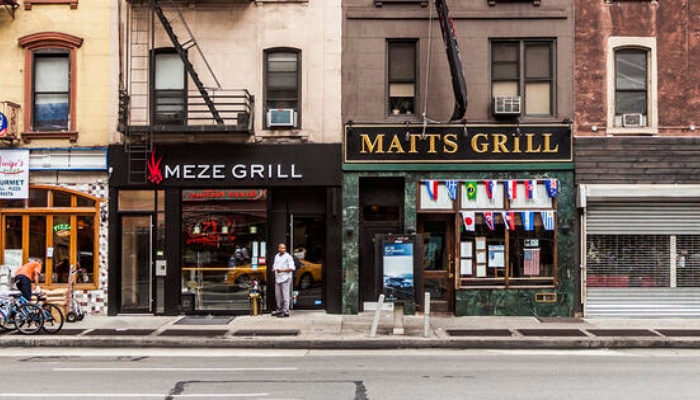Small Businesses Grapple with Persistent Inflation
Anúncios
In 2021, when the price of organic cotton and other raw materials spiked, the family that runs White Lotus Home, a New Jersey-based sustainable bedding company, hoped the 20% to 25% jumps were merely momentary and opted to absorb most of the costs. But earlier this month, amid concerns about rising inflation, Marlon Pando, White Lotus Home’s chief executive, emailed customers to explain that the 42-year-old company could no longer afford to do so, and that prices would go up in 2024.
In Boulder, Colorado, restaurateur Tony Hessel spends his weekends poring over spreadsheets he’s built to wrangle ingredient costs that have been consistently erratic. While he has been able to lower prices on some dishes, he’s had no choice but to raise others.
Inflation in the United States has unquestionably cooled after hitting 40-year highs last year. However, recent inflation gauges, the actions of reticent small businesses like these, and the broad-based announced price hikes by large entities like Chipotle and Disney, reinforce what Federal Reserve Chair Jerome Powell and others have repeated for months: Disinflation will be bumpy. The business of selling certified organic and sustainable bedding — especially products that are handmade in the United States — certainly falls outside the mainstream. As such, Pando said he strives to be extremely transparent whenever there’s any shift in prices or availability.
“Some folks may think that just because I’m in a niche market that I’m [raising prices] because I can,” he said. “So, I have to be very clear and forward.”

Back in September 2021, when the raw materials suddenly became much pricier, he laid out the situation in an email to loyal customers. What resulted was a sales surge that helped the company get through a tough stretch without raising prices. This time around, there was no avoiding it, he said.
Still, he’s hopeful that his company can help customers weather the increases in different ways, be it through financing options, flexible payments, and having a variety of products at different price points.
“I try to be a little old school, and we’re very big on if you send us a check or Zelle, you get an extra discount,” he said.
Inflation pressures remain Prices in the United States, by and large, are still going up — just not as much as they were last year. During the 12 months that ended in September, the Consumer Price Index rose 3.7%, versus the 41-year high of 9.1% in June 2022. Other key inflation gauges, the more comprehensive Personal Consumption Expenditures price index and the wholesale-focused Producer Price Index, have moderated as well.
However, in recent months, their descents have been choppier. A spike in gas prices and other components such as persistently high shelter costs have kept inflation elevated. When digging into the numbers, the picture does look rosier, economists say, noting that the monthly inflation gains are in line with the Fed’s desired 2% inflation target. (The latest reading of the Fed’s preferred inflation gauge, the PCE index that strips out energy and food, will be released on Friday).
Businesses “are raising their prices, but less quickly than they were a year ago or even two years ago, so we are seeing inflation moderate there,” said Mark Zandi, chief economist at Moody’s Analytics. “Their costs are rising, and they are passing some of that through, but I suspect it’s going to come in a lot more here going forward; because their costs are going to rise less quickly.”
Still, inflation weighs heavy on small businesses, according to the National Federation of Independent Businesses’ latest survey. In September, 23% of NFIB survey respondents reported that inflation was their top concern, and 29% reported they had raised prices, an increase of 2 percentage points from August. “This has been an ongoing theme through the last year of small business owners who hadn’t really had to raise prices for long extended periods of time all of a sudden realizing that they can’t absorb internally those price increases because of inflation pressures — that they’ll have to pass those costs along to customers,” said Holly Wade, executive director of the NFIB Research Center.
A phoenix, and prices, rising In June 2020, the stifling economic effects of the raging Covid pandemic delivered a shocker to the scenic and well-to-do city of Boulder, Colorado: A trio of popular downtown restaurants — including one that was open nearly 30 years — closed up shop.
The locally owned Walnut Group restaurant company closed its venerable Mediterranean Restaurant (fondly called The Med), the French bistro Brasserie Ten Ten and the newer Italian entrant Via Perla. The restaurants were either far too spacious for the occupancy limits or not simply set up for what became a to-go and delivery-centric environment, co-owner Peggy Romano told 5280 magazine at the time.
Time passed, the economy recovered and longtime chef Tony Hessel was able to partner with Romano to resurrect Brasserie Ten Ten. Although Brasserie Ten Ten had a nearly two-decade run before its closure, it was like starting a brand new restaurant, Hessel said. However, this new but familiar face had to not only live up to 17 years worth of expectations, but also had to navigate some of the worst inflation since the early 1980s.
“We opened right at the time when eggs were like $150 a case and beef was $25 a pound,” Hessel said. “Everyone was just excited that the restaurant is back, but as soon as we open the doors, there was the sticker shock.”
For the past year, Hessel has sifted through the carousel of ever-changing cost sheets, tried to figure out the best deals, and adjusted the menu pricing on a weekly basis. “I decided to be in the people business, and in order to do that, you have to be cognizant of both the positives and the negatives,” he said. “And, especially with pricing, you’ve got to be able to say, ‘OK, well, that one’s coming down, we can afford to drop it $1, but we have to raise this one by 50 cents, because it’s not coming down, and doesn’t look like it’s ever going to come down.”
The price swings have moderated somewhat on the supply side, but Hessel expects to be on this roller-coaster ride for the foreseeable future.
“Do I think it’s going to change? I can hope it’s going to get better, because that means my employees are happier, things are better, everyone’s making more money, and people are happier,” he said. “But what I really firmly believe is it’s going to be another year of slogging through and hoping to see something change.”
He added: “It’s a slog right now, because you don’t know what’s around the next corner.”
See also: Israel-Hamas Conflict: Market Impact






